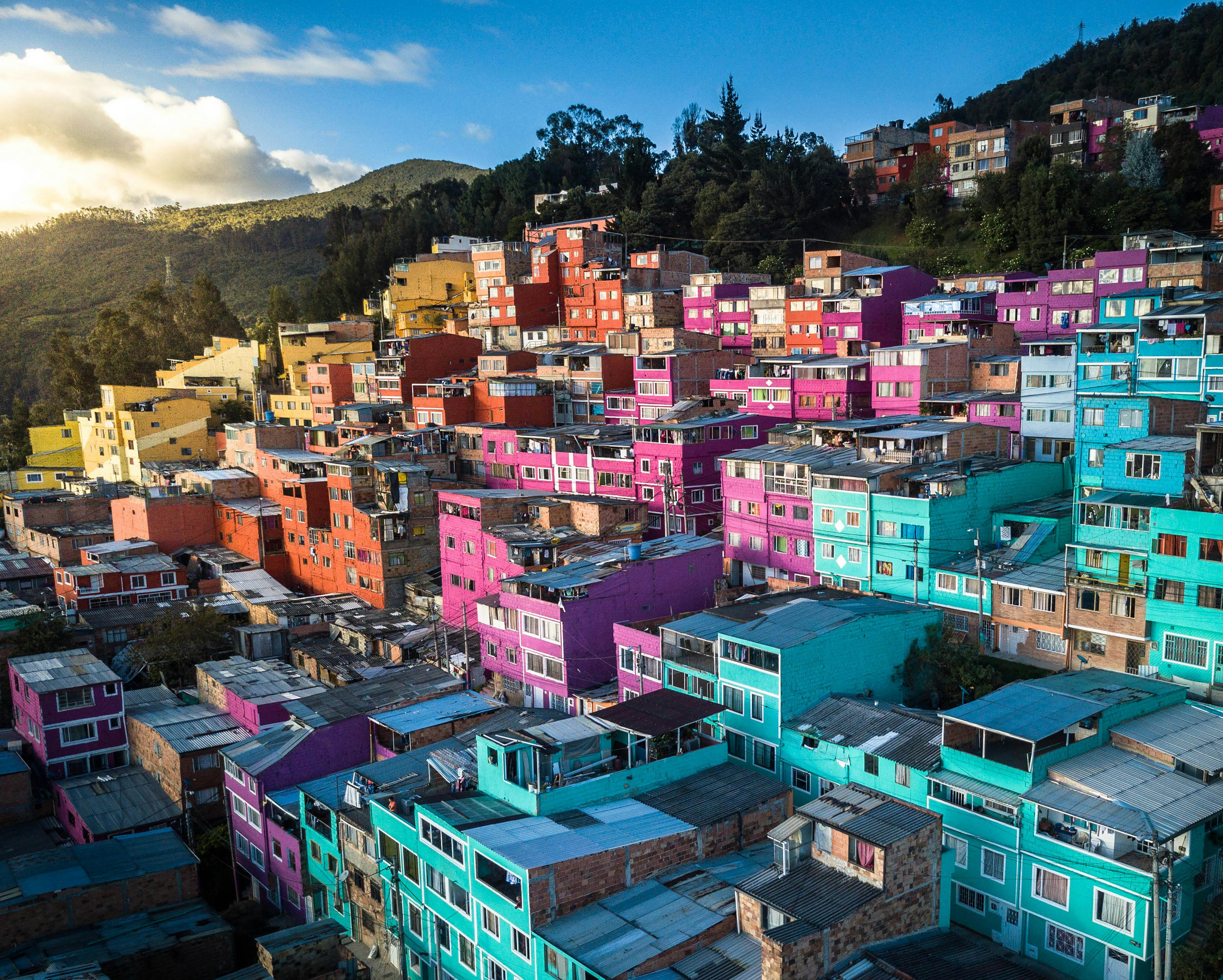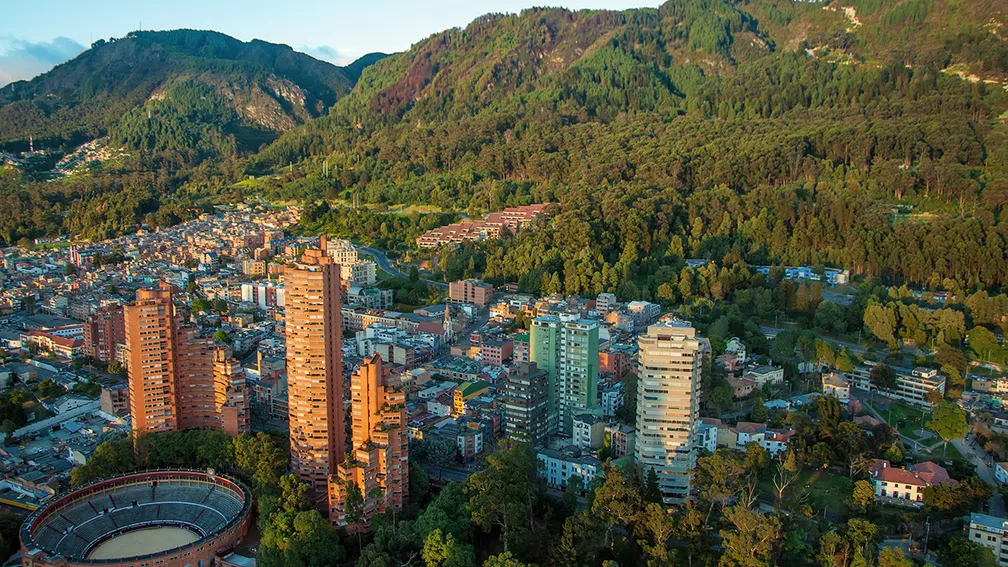



Bogotá is Colombia’s sprawling, high-altitude capital. La Candelaria, its cobblestoned center, features colonial-era landmarks like the neoclassical performance hall Teatro Colón and the 17th-century Iglesia de San Francisco. It's also home to popular museums including the Museo Botero, showcasing Fernando Botero's art, and the Museo del Oro, displaying pre-Columbian gold pieces. ― Google
Elevation: 2,640 m
Population: 7.907 million (2023)
Largest locality by population: Suba (1.218.213 – 2015 est)
Postal code: 11XXXX
Area: 1,776 km²
Area code: +57 601
Demonym(s): Bogotan; bogotano, -na, rolo (informal), cachaco (informal) (es)
Bogotá has a cool, spring-like climate year-round due to its elevation (~2,640 meters / 8,660 feet). The best months to visit are:
December to March (dry season)
July to August (fewer showers)
Rain can happen any time, so pack a light rain jacket.
By Air: Fly into El Dorado International Airport (BOG), Colombia’s largest airport with flights from around the world.
By Bus: Buses connect Bogotá with all major cities, though journeys from places like Medellín or Cali can take 8–10 hours.
Local Transport: Use TransMilenio (BRT system) or taxis/rideshare for getting around. Bogotá is large, so plan accordingly.
Monserrate – Iconic hilltop church with stunning views of the city. Accessible by cable car or hiking.
La Candelaria – Colonial heart of the city with colorful houses, street art, and museums.
Gold Museum (Museo del Oro) – Home to the world’s largest collection of pre-Hispanic gold artifacts.
Botero Museum – Showcasing works by Fernando Botero and international artists like Picasso and Monet.
Plaza Bolívar – Historic main square surrounded by key government buildings and the Catedral Primada.
National Museum of Colombia – Focused on Colombian history, art, and culture.
Usaquén – Charming district with cobblestone streets, flea markets, and upscale dining.
Simón Bolívar Park – Massive green space with trails, lakes, and open-air concerts.
Tequendama Falls (Salto del Tequendama) – A dramatic waterfall just outside the city (best during rainy season).
Graffiti Tour in Bogotá – Explore the vibrant and politically expressive street art scene.
Walk or bike through La Candelaria, the historical center.
Take the cable car or funicular up Monserrate for breathtaking city views.
Explore local markets like Paloquemao for flowers, exotic fruits, and street food.
Enjoy Bogotá’s lively nightlife in Zona T and Zona G (gastronomic zone).
Visit local coffee shops for a deep dive into Colombian coffee culture.
Rent a bike on Ciclovía Sundays, when major roads are closed to cars for cyclists and pedestrians.
Luxury: Five-star hotels in Zona Rosa and Zona G.
Mid-range: Boutique hotels and Airbnb options in La Candelaria or Chapinero.
Budget: Hostels and guesthouses in La Candelaria are ideal for travelers and backpackers.
Traditional Dishes:
Ajiaco: Hearty chicken and potato soup with corn and guasca
Tamales bogotanos: Wrapped in banana leaves, filled with meat, cornmeal, and vegetables
Changua: Breakfast soup with milk, eggs, and bread
Arepas & empanadas at street stalls
Areas to Eat:
Zona G: Gourmet restaurants
Zona T: Trendy bars and international cuisine
La Macarena: Artsy district with global flavors
People: Bogotanos are formal, educated, and often more reserved than coastal Colombians.
Language: Spanish is primary; English is spoken in tourist areas and upscale establishments.
Arts & Music: Street art is prolific. Music ranges from Andean folk to modern fusion.
Events:
Festival Iberoamericano de Teatro (every 2 years)
Rock al Parque: Free rock festival in the park
Bogotá International Book Fair